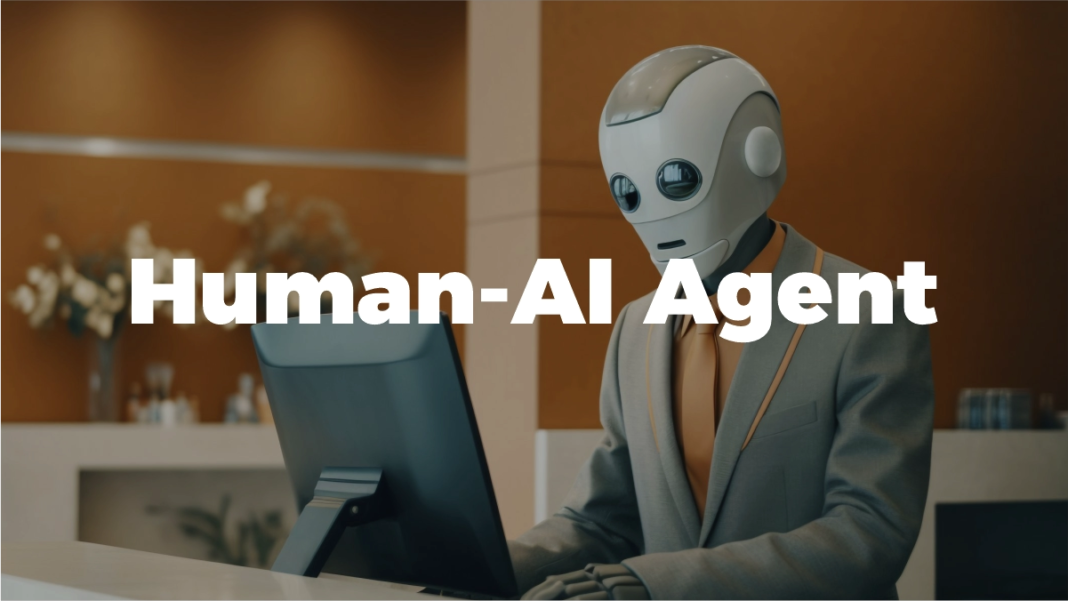In 2025, the rise of the Human-AI Agent is reshaping how we work, communicate, and innovate. No longer confined to passive roles, AI agents are evolving into proactive collaborators-capable of executing tasks, making decisions, and even co-creating with humans. As organizations seek to unlock new levels of productivity and creativity, the Human-AI Agent emerges as a pivotal force in the next era of digital transformation.
This article explores the evolution of Human-AI collaboration, the architecture of agentic systems, ethical considerations, and the future of work in an AI-augmented world.
1. The Rise of Human-AI Agent Collaboration in the Enterprise
The concept of AI agents has matured significantly. Once limited to simple automation, AI agents now exhibit goal-directed behavior, autonomy, and contextual awareness. According to a 2025 PwC survey, 79% of senior executives report already adopting AI agents in their organizations. These agents are not just tools-they are digital teammates capable of scheduling meetings, drafting documents, and even negotiating contracts. [Forbes]
A Stanford HAI report highlights the emergence of collaborative AI systems, where multiple specialized agents work in tandem with humans to solve complex problems in healthcare, finance, and education. This shift marks the beginning of what experts call the Agent Economy, where AI is deeply embedded in workflows, amplifying human capabilities rather than replacing them. [hai.stanford.edu] [Forbes]
2. Architecting the Human-AI Agent: From Assistants to Autonomous Collaborators
The architecture of Human-AI Agents is evolving rapidly. Unlike traditional chatbots, modern agents are built on Large Language Models (LLMs) and enhanced with semantic layers that provide context, governance, and explainability. This enables agents to move from reactive assistants to autonomous decision-makers.
A 2025 report by AtScale and MIT emphasizes the importance of semantic layers in transforming AI agents into enterprise-ready solutions. These layers act as a “single source of truth,” reducing hallucinations and ensuring consistent, explainable outputs. [USA TODAY]
Moreover, OpenAI’s GPT-4o is powering agents that can collaborate with humans in real-time, even in creative environments like gaming and design. These agents are designed to simulate cognitive functions such as attention, memory, and social reasoning, making them more human-like in their interactions. [openai.com]
3. Ethical Design and Trust in Human-AI Agent Systems
As AI agents gain autonomy, trust and transparency become critical. A 2025 Capgemini Research Institute report reveals that confidence in fully autonomous agents has dropped from 43% to 27% due to privacy and ethical concerns. However, 90% of executives believe that human oversight in AI workflows is either cost-neutral or beneficial. [www.capgemini.com]
To address these concerns, technologies like Proof of Human (PoH) are emerging. These systems use cryptographic methods to verify that a human initiated an action, ensuring accountability without compromising privacy. [Forbes]
Additionally, explainable AI (xAI) is gaining traction. By making AI decisions transparent and traceable, xAI helps organizations maintain compliance, reduce bias, and build user trust-especially in high-stakes sectors like healthcare and finance. [Forbes]
4. Human-AI Teaming: Redefining the Future of Work
The integration of Human-AI Agents is not about job replacement-it’s about job transformation. A 2025 McKinsey report estimates that AI could unlock $4.4 trillion in productivity gains, with the greatest impact occurring when humans and AI collaborate effectively. [www.mckinsey.com]
In practice, this means AI agents handle repetitive, low-stakes tasks, freeing humans to focus on strategic, creative, and interpersonal work. A Stanford study found that professionals are open to using AI agents-especially when they automate mundane tasks and enhance job satisfaction. [www.zdnet.com]
The World Economic Forum emphasizes the need for new leadership skills to manage hybrid teams of humans and AI agents. Managers must learn to lead in environments where AI agents are part of the team, working 24/7 and adapting in real time. [www.weforum.org]
5. The Human Layer: Emotional Intelligence and Co-Creation
Beyond logic and automation, Human-AI Agents are beginning to engage in emotional and creative collaboration. The Co-Gym framework developed at Stanford enables AI agents to negotiate task ownership, clarify shared goals, and adapt to shifting priorities in real time. [story.haxitag.ai]
This model is particularly effective in high-stakes environments like mergers and acquisitions, where AI agents can proactively flag risks, suggest strategic pivots, and support human decision-making. The result is a co-creation dynamic that enhances both accuracy and trust.
Furthermore, MIT’s research into “personality pairing” suggests that aligning AI agents with human behavioral traits can optimize collaboration and reduce friction. This opens the door to personalized AI teammates that adapt to individual work styles and emotional cues. [mitsloan.mit.edu]
Conclusion: The Human-AI Agent Era Has Arrived
The Human-AI Agent is not a distant vision-it’s a present reality. As AI agents become more autonomous, explainable, and emotionally intelligent, they are transforming the very fabric of work and collaboration. But success in this new era depends on one critical factor: the human element.
As Franck Greverie, Chief Portfolio & Technology Officer at Capgemini, puts it:
“The economic potential of AI agents is significant, but realizing this value depends on more than just the technology-it requires a comprehensive and strategic transformation across people, processes, and systems.” [www.capgemini.com]
Organizations that embrace Human-AI collaboration, invest in ethical design, and prioritize human oversight will lead the way in the Agent Economy.
People Also Asked
What is a Human-AI Agent?
A Human-AI Agent is an autonomous or semi-autonomous system that collaborates with humans to perform tasks, make decisions, and enhance productivity through intelligent interaction.
How do Human-AI Agents improve workplace productivity?
By automating repetitive tasks and providing real-time insights, Human-AI Agents free up human workers to focus on strategic and creative responsibilities.
Are Human-AI Agents replacing jobs?
Not entirely. Most experts agree that Human-AI Agents are more likely to augment human roles rather than replace them, leading to job transformation rather than elimination.
What are the ethical concerns around Human-AI Agents?
Key concerns include privacy, accountability, bias, and transparency. Technologies like Proof of Human (PoH) and explainable AI are being developed to address these issues.


